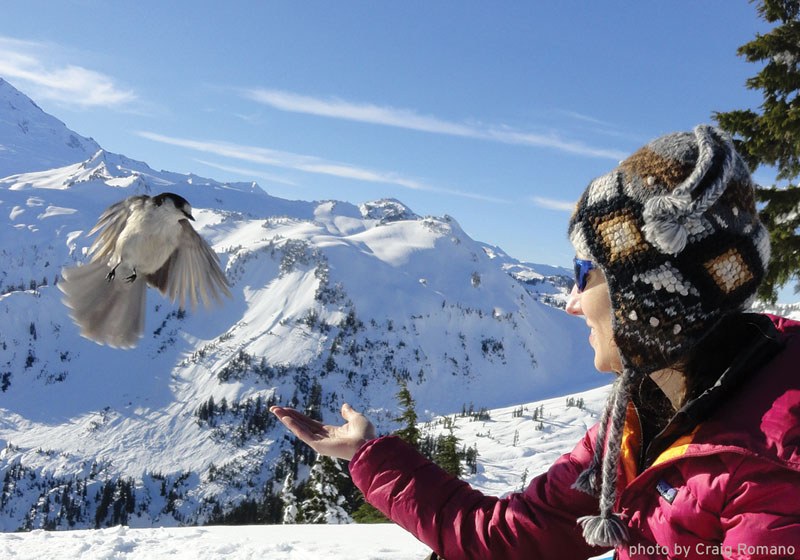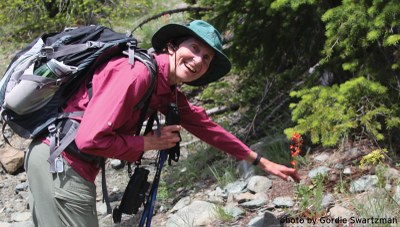
I grew up in the city. A fairly large city at that. No more than ten minutes from downtown high-rises. Nature to me was a line of oak trees on a hillside of evenly cut grass.
It was where squirrels begged for Payday bars, because every squirrel knows caramel-covered peanuts are more awesome than acorns. To my parents’ dismay, I would actually lie on my back in the grass with pieces of the bar on my stomach and hold back my little-girl squeals of delight as the squirrels climbed on top of me and ate their candy just inches from my nose.
Clearly, I was a nature-girl at heart. But the idea of exploring and understanding true wilderness – not parks and hills groomed by man – was overwhelming to me. To begin to really understand the complexity of nature, I enrolled in The Mountaineer’s Introduction to the Natural World Course. I was hoping to learn a thing or two about plants and animals that aren’t as tame as my city squirrels
The first time I went on a field trip through the naturalist course, we stood in front of a small square section of land with our trusted guidebooks and were able to identify every single plant. I was so excited – I didn’t know this was possible. Suddenly my world was both smaller and larger than ever before. Hundreds of trees on a forest walk became a community of hemlocks festooned with old man’s beard, a common name for one of the types of lichen that grow on trees. The plants at my feet became brambles, twinflower and trilliums. The birds that flew by were not just whistling accents in the air, but black-capped chickadees and cedar waxwings.
Everyone can Naturally be a Naturalist
Everyone with eyes and ears and a little bit of patience can make an excellent naturalist. We learned as much from each other on these trips as we did from the leaders. We turned over leaves and rocks to analyze their structure or the creatures below, then hiked on to see how the plants and animals changed with the landscape and altitude.
On one hike, I had the pleasure of running into Gordie Swartzman, a gentleman whose enthusiasm for identifying elements of the natural world is both refreshing and contagious. He’s the current facilitator of the naturalist course and explained its history to me. “About ten years ago,” Gordie said, “two members of The Mountaineers’ nature study group — a couple by the name of Don and Anne Schaechtel — took it upon themselves to create a kind of nature study boot camp. The idea was to teach the basics of nature study to anyone who wanted
to learn, allowing the study group to be enjoyed by everyone who was interested — not just those who already know a lot about nature.”
Naturalist Boot Camp
This ‘boot camp’ evolved into the Natural World Course that I took, two years ago now. Like most Mountaineer programs, it’s taught by a team of passionate and knowledgeable volunteers. The course covers everything from ferns and flowers to birds, insects, reptiles, butterflies, and rocks. There are also talks on how the Pacific Northwest landscape was formed and its resulting bioregions.
“Besides the goal of giving a grounding on how to observe the various biota and to distinguish them from one another,” Gordie said, “the course aims to change the hiking experience from passing through to being in – to experience connections, to ask new questions, to teach and learn from each other and to appreciate the natural world in a new way.”
It certainly did that for me. And as it turns out, the names don’t matter as much as I thought they did. What matters is the recognition and understanding. Some of the best naturalists I’ve met admit they often forget the names of plants or animals from season to season – but they know just what clues to look for to identify them.
Identifying Species your own Way
One respected naturalist in our community and also the Naturalist Lecture Series Subcommittee Chair, Vicki King (photo below), sees the identification of plants in a different light. “Botany is still evolving,” she tells me. “With new technologies and the ability to identify relationships among plants based on their DNA rather than their flowering parts, botanists are trying to recreate the evolutionary family tree of plants." Vicki still inspects blossoms, turns over leaves and brings her guidebooks along on hikes, but she explains, “sometimes you need a microscope to truly tell some species apart.”
Both on small scale and large, the basics of nature study provide the ability to read signs, paths and directions in the wild. They can be as clear as those in a city – just spelled out in different ways. They give me the confidence to keep exploring and the desire to share these explorations with others.
I now lead hikes and backpacks to my favorite places like Royal Basin in the Olympics and Lake Twenty-Two along the Mountain Loop Highway. With every visit, I discover something new. Sometimes, I discover the wilderness to be even tamer than the city. It’s quieter, cleaner, and little gray jay birds atop popular mountains fly right up to you, like something out of Dr. Doolittle. Never mind the fact that they're trying to steal your food.
The Natural World Course
It is sponsored by our Seattle Naturalists Committee and opens for registration and starts April 15. It includes four evening lectures and four field trips.
This article originally appeared in our March/April 2014 issue of Mountaineer magazine. To view the article in magazine form and read more stories from our bi-monthly publication, click here.
note: The Mountaineers does not encourage touching or feeding wildlife, even if they fly up to you, begging for food.
Add a comment
Log in to add comments.I have attended this excellent class twice and I would enroll again if I had time! This year I am offering my own naturalist class: Western WA Rivers and Salmon thru WA Water Trails Assoc. Please join us!
I know this was published nearly seven years ago, but I found it useful as an identifier for a co-leader even in 2021. Mountaineers Naturalists rock!
 Suzanne Gerber
Suzanne Gerber
